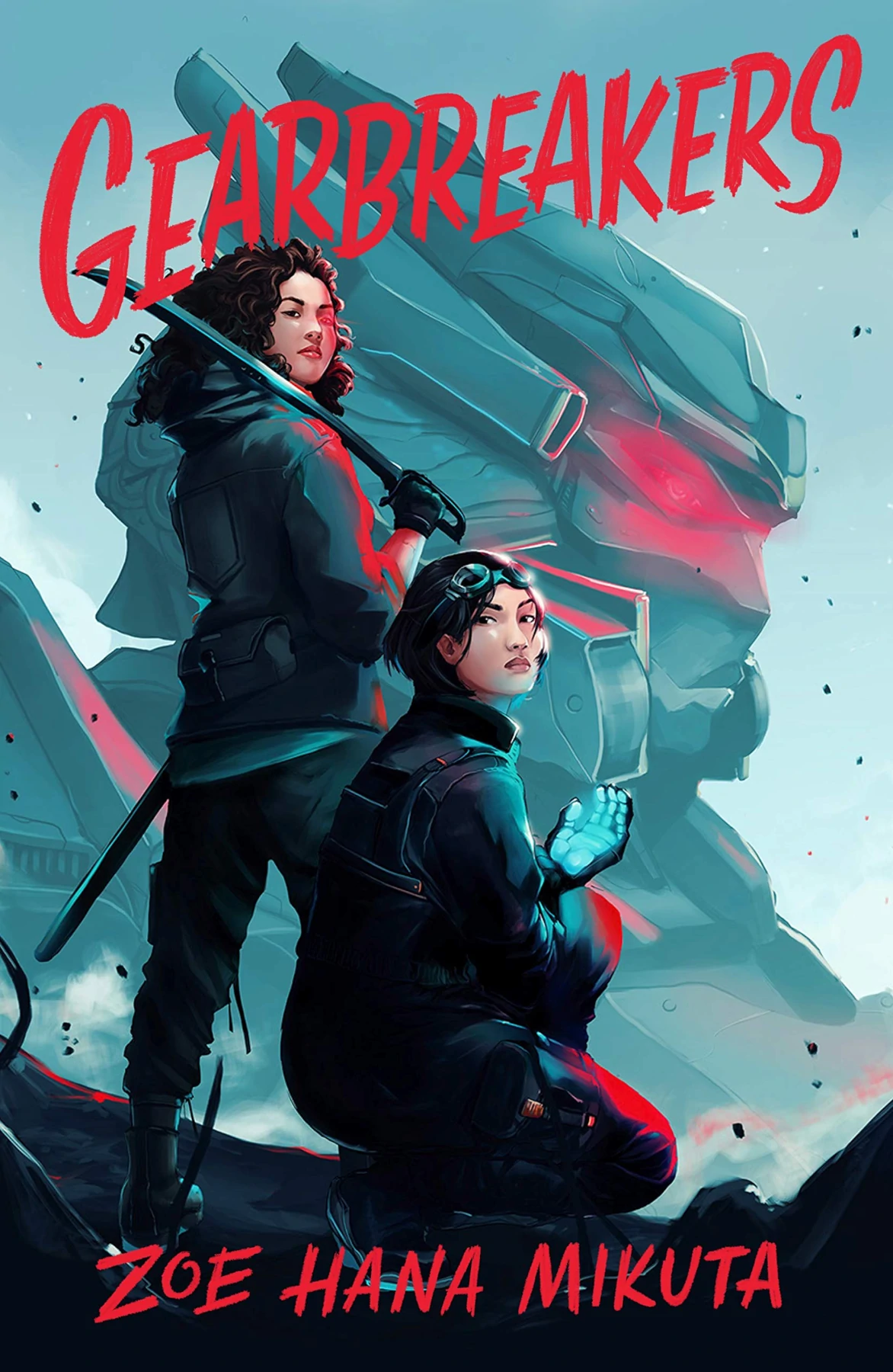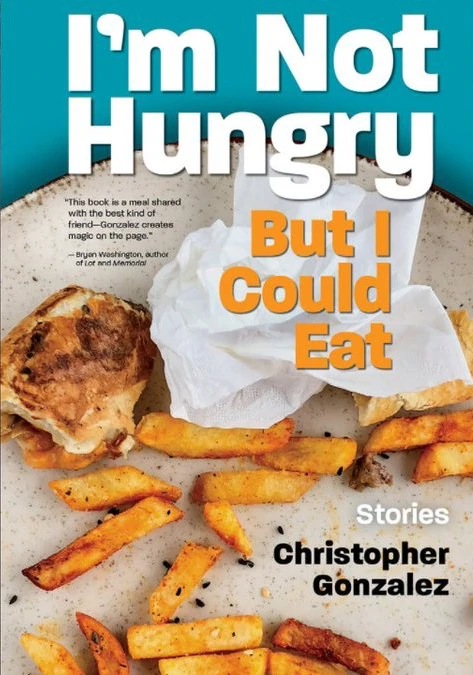
An Interview with Zoe Hana Mikuta
Gearbreakers has been such a success, congratulations! What was the first month like?
It was fun! It’s been really cool seeing people excited over it online—because those are my kind of people. I was initially worried because I was really young when I wrote the book, and my writing style has changed a lot since then, but I’ve been able to ease up and be excited that people will be able to see my growth with the things to come.
How did the concept of Gearbreakers come to be? Were there any specific sources of inspiration?
I knew I wanted to write about big robots. The rest just spilled from there. Pacific Rim is definitely one of the inspirations, and also one of the best things to exist in modern media in general.
Your opening sentence “It makes sense that, when the times were desperate enough, when the people were frenzied enough, at a certain point we went past praying to deities and started to build them instead” kicked me in the teeth. I read it several times over. Has that sentence always been the opening to Gearbreakers? Has Gearbreakers always been the title? Are opening lines particularly meaningful to you as a reader?
Nope! That first line came from a couple of chapters in, and my editor suggested I move it up. I think the original line was “We evolve the day the sky bleeds.” Gearbreakers has always been the title, though for the sequel I had trouble coming up with something that would match its energy—my editor and I settled on Godslayers, which I like more and more every day. As a reader, opening lines are always so important. They can establish a tone almost immediately; it’s a first impression.
One of the themes that I loved throughout Gearbreakers was resilience and taking charge of your own destiny come hell or high water. Was that something you had in mind from the beginning? Did Sona and Eris start with their feisty, scrappy personalities? Or did that come through while drafting?
I think agency and the resilience that agency implies will always be some kind of theme in what I’m writing. Sona and Eris were always feisty; it was their softer parts that came through with drafting, to make them dynamic, but I also think I wouldn’t have been able to put those parts in during the first round—they weren’t established in my head yet, and it’s like I needed that framework in order to hang other traits on. (I’m writing this down and the logic holds and yet I still freak out whenever my first drafts aren’t perfect).
You do such a brilliant job of keeping Sona and Eris separate through their distinct voices. Between Sona and Eris, who was the easiest to write and why?
I don’t think that one was necessarily easier than the other—like with the question prior, they became more distinct in my head as I continued to draft/edit, and that certainly made writing them in the sequel, Godslayers, smoother because they were already fully-formed. It’s an element of writing I find so thrilling in general, that character voices will become actualized in my head the more I build on them so that I’m basically switching off narrators when I’m reading it over.
The theme of refusing to accept a destiny someone else wrote seems to me very different from the simpler “I crave my own destiny.” In this world, there are clear and expected pathways for both Sona and Eris, and at numerous points, they spurn the expectations of the dystopian world around them. How important was this to you?
One of the major themes in Gearbreakers is how, when you’re born onto a side, it’s hard to see anything but the path you’ve been placed on. This goes for both the Pilots and Gearbreakers—they’ve been raised to think the world is black and white and that the way to have a long life is to act in hatred and violence. To love someone is to humanize them is to have a greater ability to do it again, like practice, even though in this harsh world it gives you more to lose. In a setting where the opposite is said to keep you alive, to fear loving other people and doing it anyway is to refuse that destiny.
Of the themes in Gearbreakers, which was the most important to you? Did you have a touchstone theme as you were writing that you kept returning to?
Defund the military.
You grew up in Colorado, where Brink is based, so yay Colorado! Secondly, you’re a Husky! (I lived in Seattle for a time after I graduated high school.) How did you find writing a novel (and publishing said novel) while studying? Were there any particular challenges or benefits of being based in Seattle? Are you close with the writing and publishing world there?
Writing has always been my downtime, and it’s just something I have to drop into my routine. It helped on-campus that we had such a gorgeous library for me to sit at and work in for hours. Email is definitely all I’m using to communicate professionally, and everyone’s on Twitter so that’s where I’m getting more of my bookish current events. I can’t wait to do in-person things, though—maybe Comic-Con next year? I was a panellist over Zoom this year but I’d love to be able to freak out over it in person.
What was the biggest change between the draft you submitted to your editor and the ARC that I read?
Nothing big—a couple of tweaks on the romanizations of Korean words. A few sentences in the beginning chapters were clunky, so I trimmed those. When Eris is facing off with that guard in that first takedown, I think I changed her response from “Do you really?” to “No, you wouldn’t” when he says he’d like to see her try to kill him. I liked the little arrogance boost.
What was the publishing process like for you as a debut novelist? How’d you catch the eye of Feiwel & Friends? What advice would you give a writer seeking publication?
You have to make sure that your representation is solid—I think that’s the most important, especially as a debut novelist who might not know a lot about the publishing world. I was really young, eighteen, when I signed my agency contract and nineteen when I signed with F&F. I started off being really timid with what I wanted creatively, so the advice I would give to a writer is to not back down when it comes to establishing your creative freedom.
Apart from the unnamed sequel to Gearbreakers, are you working on anything else? What’s next for you? What are some of your aspirations as a novelist?
The sequel is named now—Godslayers! Again, I love it. I’m editing my YA fantasy horror right now—Rabbit & Sickle—a gothic Alice in Wonderland meets Attack on Titan meets Gideon the Ninth (read: there’s gooey magic and feral Saints in Wonderland!). I want to write pretty much every genre, so I’m just going down the list. I’m also drafting a YA contemporary sci-fi about kids building robots in their basements and then illegally brawling them in the abandoned underground of 2053 Seattle—basically Perks of Being a Wallflower meets Real Steel. It’s all for fun.
Lastly, has your mission to befriend the murder of crows on the University of Washington campus succeeded? They remember faces for generations—how is that going for you?!
As I’ve been off of campus for a year and a half, I have switched my bird-befriending intentions from the campus to around my house a few blocks away, where I feed the crows cashews in the alleyway. My current regulars are Rosie (she came first), Francis (her buddy, they’ve been coming together lately), and Ragnarok (ragged and old and comes alone; if others beat him to the cashews, I can catch him on the roof staring them down and waiting for them to go away). They come and caw at my window regularly when I’m trying to write, which cultivates the setting, which motivates me to work. My current goal is more crows.

